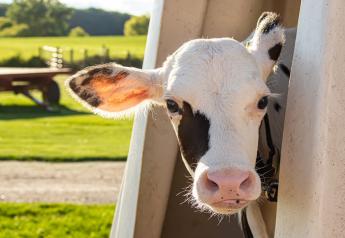Nutrition: Consider Canola Meal


**Extended comments highlighted in blue.
With record-high protein prices, don’t limit the protein sources on your herd’s menu.
Canola meal has been shown to be an excellent source of protein for dairy cattle and is becoming more widely available across the U.S.
Although canola meal has been commonly fed in the western U.S. for several years, it may not be as familiar in other parts of the country.
So what is canola? Canola is improved rapeseed. Rapeseed varieties have existed for years, but they contained undesirable levels of erucic acid and glucosinolates (as in horseradish), which limited rapeseed’s use for humans and made it unpalatable for livestock. Plant breeders improved the palatability, protein and oil quality and renamed it canola, a contraction of "Canadian oil."
Most of our canola comes from Canada, but I’m seeing some canola grown as far south as Georgia and Oklahoma as a winter crop. These local sources have made canola very competitive in some of my clients’ diets. But even shipped down from Canada, canola might be able to save you money over soybean meal.
|
| USDA Dairy Forage Research Center |
Glen Broderick’s group at the U.S. Dairy Forage Research Center in Madison, Wis., is engaged in an ongoing project to learn more about feeding canola meal in dairy diets.
A couple of their abstracts presented at the American Dairy Science Association meetings in July showed that feeding canola meal to lactating cows resulted in improved production and efficiency of nitrogen utilization over soybean meal. In the studies conducted so far, diets with canola meal increased the milk protein yield and resulted in lower milk urea nitrogen (MUN) than similar diets with soybean meal.
However, there is some variability in canola meal. The same research group tested canola from 12 mills and found differences in crude protein content, neutral detergent fiber levels and protein degradability among the facilities. Rumen undegradable protein (RUP) ranged from 37% to 47%.
Book values on canola meal are typically about 38% crude protein on a dry matter basis, and it is about 25% lower in energy than soybean meal. Canola I’ve tested has been slightly above 40% crude protein.
Using the University of Wisconsin FeedVal program, with $600 soybean meal and $8 per bushel corn as reference protein and energy sources, canola meal is worth up to $450 per ton, or about $150 less than soybean meal.
If you substitute canola for soybean meal, you will need to feed about 25% to 30% more to replace the crude protein that is lost, so consider that when booking supplies. This also means that the difference in dry matter has to come out of some other ingredient in your ration.
If that ingredient is less expensive, you or your nutritionist will have to do the math on your total mixed ration cost to see if canola is saving you any money.
If the economics work out, canola is a viable replacement for soybean meal, cottonseed meal, distillers’ grains or other protein supplements and may boost production.
Rick Lundquist is an independent nutrition and management consultant based in Duluth, Minn.
You can contact him at siestadog@aol.com.







